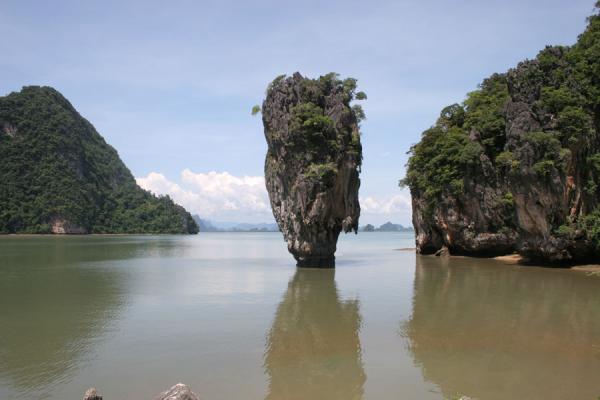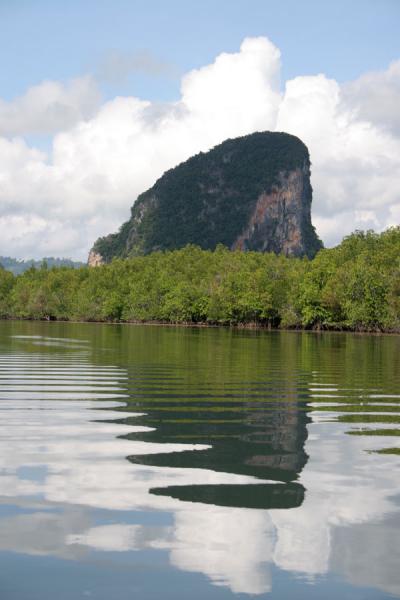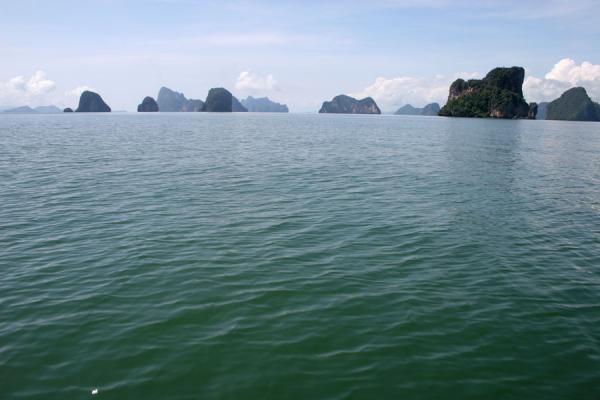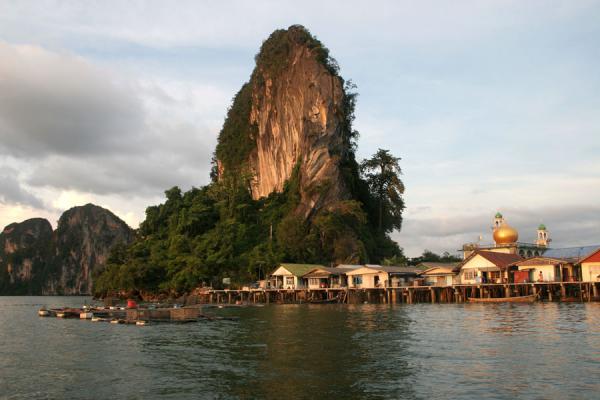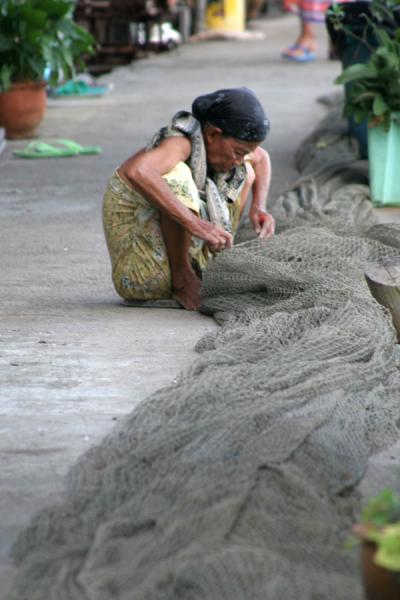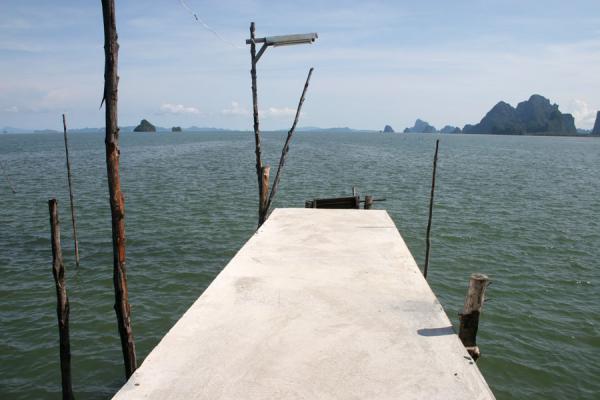Prime Minister Surayud Chulanont is in Ranong today handing out temporary identity cards to more than 200 Phang Nga and Ranong people.
Many of those identity cards stipulate the holder's religion as Christian.
There has been an unprecedented rise in conversion to Christianity in the region since the 2004 tsunami.
Before the disaster, Christians numbered between none and about two in every 100 people in Phang Nga and Ranong.
Although census records have not been updated, provincial officials say mushrooming numbers of new churches evidences the rapid rise in Christianity in their provinces.
Most of the residents receiving their new identity cards today are sea gypsies who converted to Christianity in exchange for tsunami aid.
This is common among many villages wiped out by the waves more than three years ago, here and in countries like India, Sri Lanka and Indonesia.
"Previously, sea gypsies never identified ourselves with any religion, but many of us have become Christians. That's the only way we could get help," Suparb Pramongkit said.
"We were as hard hit by the tsunami as everybody else, but we had no access to help from our government because we could not prove our citizenship.
"The Christian Church of Ranong came in and offered us immediate aid and now permanent new homes."
Suparb is a community leader and known as the messenger from God of the Christian Church of Ranong. It built a new settlement on Koh Chang, about one hour by boat from mainland Ranong.
After the tsunami, Pastor Sien Buaget of the Church of Ranong raised money from American foundations to buy land and build a new church and houses. So far, 31 sea-gypsy families who lost their homes and boats to the tsunami have moved there from all over Ranong.
Unlike in Indonesia, and some other countries with religious tension where both state and secular groups closely monitor aid-tied recruitment of new converts, Protestant churches operated freely in Thailand.
Some government officials are reportedly unhappy with their activities, but Ranong senior provincial clerk Palad Mon said local authorities did not interfere. The churches have deep pockets and their help is seen as a means to improve the quality of life of the poor, chiefly the ethnic sea gypsies, most of who are landless and lack education.
"We are still debating if we should have Christian on their temporary IDs, because we don't know what Bangkok might say," she told The Nation yesterday. "We'll decide after a meeting with our provincial governor later this afternoon."
Sien said he was well aware of the controversy surrounding Protestant churches' use of tsunami relief aid as a recruitment tool. But he has never encountered an incident in which his motives have been questioned.
"You go ask the villagers and they can tell you I help everybody, not just Christians. I never talk religion unless people ask me. But, when asked, I'm a pastor and it's my job to tell them the message of God. Conversion to Christianity is totally voluntary," he said, adding that the Church of Ranong has built five churches and mercy centres in different districts of Ranong in the past three years.
However, some sea gypsies blame Christianity for the break-up of families and communities. Suppachok Talaykla from Koh Lanta in Krabi said he had never seen his brother's family after they converted and left the community.
"My brother said he cannot return for family reunions and to pay respects to our ancestors' spirits. His church prohibits him to uphold his original practices," Suppachok said.
"He cannot have our [deceased] parents' pictures in his house, nor can he come back to our annual boat-floating ceremony. This angers me, and I'm not sure if I want to see him again."
Sien said those who were worried over the numerous conversions to Christianity may be surprised that ultimately many would give up the Christian faith.
He said he would be happy if there were just a few believers left in the next two years, from the 30-odd families at his new settlement on Koh Chang.
"I know they came because they needed material help, and that they would leave once they got what they want," Sien said. "I know some of the new churches in Phang Nga had to close down, because nobody attended anymore.
"Oh yes. We knew this would happen, but we received donations to build the churches, and that's what we had to do. We could not use the money for other purposes apart from those of the donors."
Nantiya Tangwisutijit
The Nation
